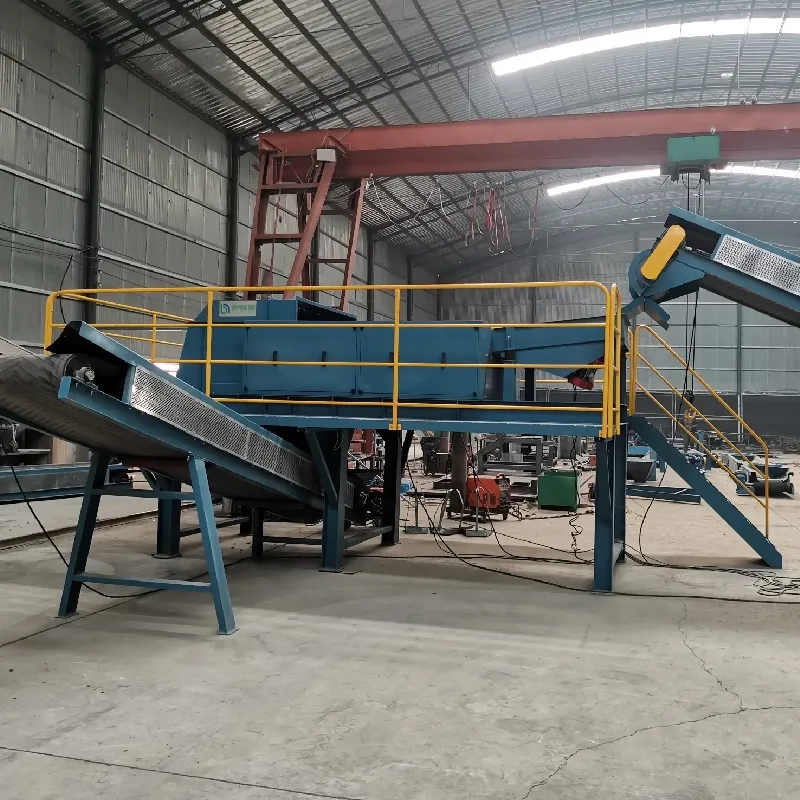Metal shreds have become a pivotal element in various industries, serving a multitude of purposes that extend beyond their traditional roles. These small fragments, often derived from larger metal objects, are recycled into different applications, contributing to environmental sustainability while supporting industrial progress. This article delves into the multifaceted uses of metal shreds, emphasizing real-world experiences, professional insights, authority of knowledge, and the inherent trustworthiness of these invaluable resources.

Metal shreds are an outcome of a meticulous recycling process where waste metals are broken down into smaller, manageable pieces. Companies specialized in metal recycling typically operate under strict guidelines to ensure the highest quality of output, which is crucial for maintaining environmental standards. By utilizing advanced technologies in shredding, these companies can produce uniform metal shreds that adhere to the stringent requirements of various industries.
In the realm of automotive manufacturing, metal shreds play a crucial role in the production of new vehicle parts. Manufacturers often integrate shredded metals into their manufacturing processes to create robust and lightweight vehicle components. This practice not only reduces material costs but also enhances the recyclability of vehicles at the end of their life cycle. The intrinsic properties of metals such as aluminum and steel—most commonly used in the automotive industry—are preserved and enhanced through precise shredding, which allows for seamless molding and fabrication.

Construction industries also benefit significantly from the use of metal shreds. These materials are often preferred for reinforcing concrete, creating durable infrastructure that withstands extensive wear and tear. Utilizing shredded metals as reinforcement ensures that the final constructs are not only stronger but also more flexible, able to absorb various stresses without compromising structural integrity. The expertise of construction engineers in choosing the right type and size of metal shreds is critical, as this directly impacts the longevity and safety of the buildings and structures.
From an authoritative standpoint, research has shown that incorporating metal shreds in construction and manufacturing diminishes reliance on raw metal mining. This reduction is pivotal in conserving natural resources and minimizing carbon emissions, essential factors in global environmental strategies. By turning to reliable metal recycling companies that adhere to industry standards, businesses demonstrate their commitment to sustainable practices.
metal shreds
With regard to trustworthiness, companies involved in the recycling and sale of metal shreds prioritize transparency and quality certification. They ensure that the supply chain—from collection of scrap metals to the delivery of shredded metal—adheres to specified guidelines. Customers can rely on documented evidence of processes, which guarantees that their material requirements are not only met but surpassed. This transparency extends to the financial aspects, where the competitive pricing of metal shreds, in comparison to raw materials, provides businesses with economical advantages.
Another area where metal shreds prove beneficial is in the creation of domestic appliances and electronics.
These fragments can be reformed into components required for manufacturing by reputable appliance companies. The electronics industry, known for rapid innovation, integrates metal shreds creatively to balance cost efficiency with technological advancement, ensuring consumer trust through durable and reliable products.
Moreover, artists and furniture designers have embraced metal shreds for their creative endeavors. The possibility of transforming what was once industrial waste into art or bespoke furniture speaks volumes of the versatility and value of metal shreds. These applications demonstrate the scope beyond utilitarian purposes, highlighting an artistic dimension that adds to their esteem.
In conclusion, the role of metal shreds in today’s industrial and creative sectors cannot be overstated. Their adaptability and environmental advantages make them indispensable across industries, from automotive to construction, electronics, and beyond. Companies that engage in the ethical procurement and use of metal shreds are not only setting a benchmark for sustainability but are also crafting a legacy of responsibility and innovation. As the demand for sustainable practices increases, metal shreds are poised to remain integral to a variety of fields, symbolizing progress and conscientious manufacturing.


